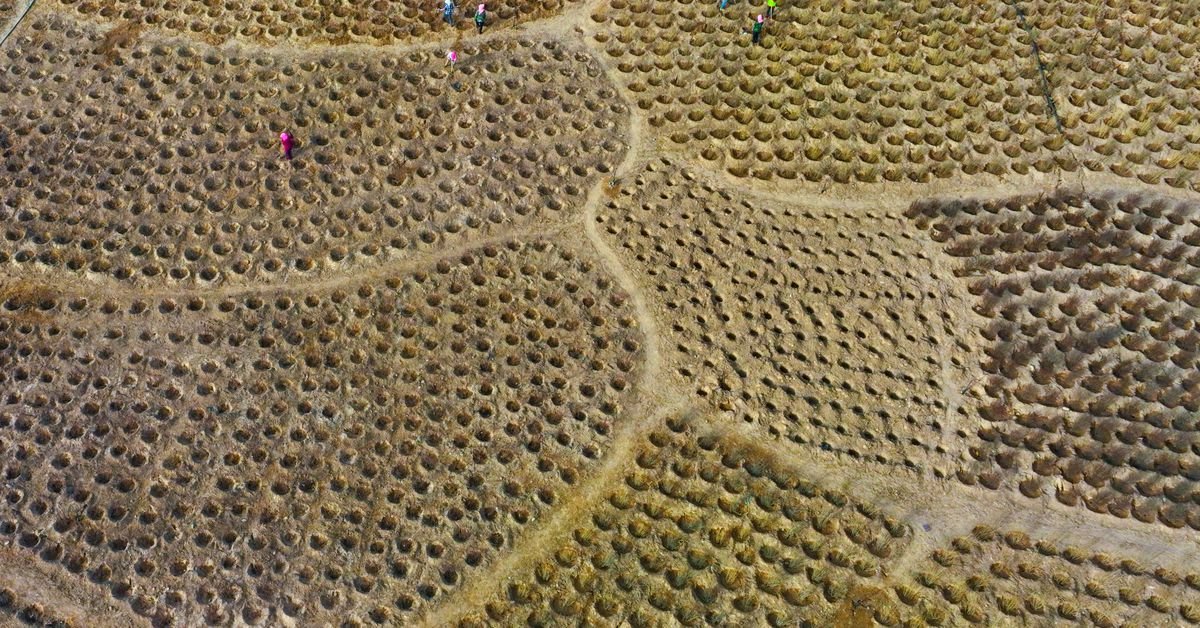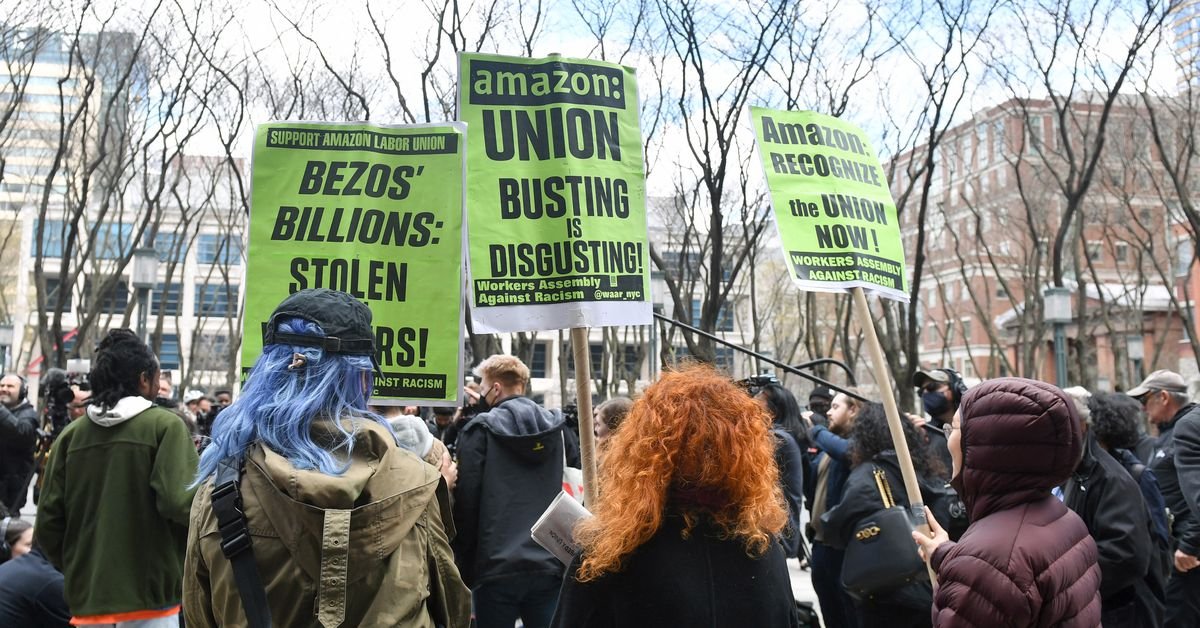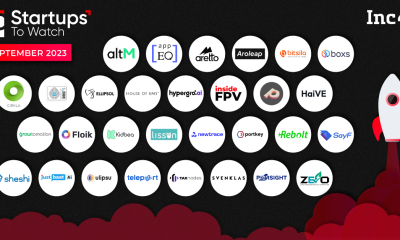Big tech companies are increasingly turning to nature to do the dirty work of cleaning up their greenhouse gas emissions. The idea is to use plants and ecosystems that naturally absorb CO2 to compensate for industry pollution, a tactic brands have come to call “nature-based carbon removal.”
Science
What is ‘nature-based carbon removal’ and is it any better than carbon offsets?

At first glance, these attempts sound a lot like carbon offset projects that have a checkered past. For decades, companies have purchased credits from offset projects to try to cancel out some portion of their carbon footprint, typically by planting trees, restoring or protecting ecosystems that sequester CO2 through photosynthesis.
It all sounds green and dandy on paper. But studies have shown that this strategy repeatedly fails to have any meaningful impact on climate change and can even lead to more environmental harm. It’s very difficult to measure how much CO2 is stored in nature through processes that can easily be reversed, releasing the greenhouse gas again to heat the planet. Is all this talk of nature-based carbon removal just a rebranding of carbon offset projects that have gotten a bad rap?
Google, Meta, Microsoft, and Salesforce, for example, are all in on nature-based carbon removal
The answer, of course, is complicated — and depends on whom you ask. At this point, no one denies that there have been problems in the past when it comes to relying on trees to clean up climate pollution. What remains to be seen is whether there can be safeguards put in place to lead to better outcomes or whether we’re simply repeating past mistakes.
Google, Meta, Microsoft, and Salesforce, for example, are all in on nature-based carbon removal. They collectively committed to purchasing up to 20 million tons of carbon credits from nature-based removal projects last month as part of a newly launched coalition called Symbiosis.
Meanwhile, tech companies’ scramble to develop new AI tools is leading to more greenhouse gas emissions from increasingly energy-hungry data centers. The more these companies try to wipe out that pollution using nature-based initiatives, the higher the stakes if those projects fail. And everyone vulnerable to rising seas and worsening weather disasters could pay the price.
The trouble with planting trees
Rather than changing the way they do business to reduce CO2 emissions, companies have typically purchased offset credits to essentially buy their way out of the problem. Many companies have relied on carbon offset credits from forestry projects to counteract a majority of their carbon pollution. Each credit represents a ton of carbon dioxide pollution avoided by planting a tree or preventing deforestation. The strategy is often criticized as a get-out-of-jail free card if the company isn’t actually reducing its emissions at the same time — especially if it buys junk carbon credits.
When it comes to nature-based carbon removal versus carbon offset initiatives, “It’s exactly the same thing. It’s the same animal,” says Wijnand Stoefs, lead carbon removal expert at the nonprofit watchdog group Carbon Market Watch. “I don’t think [carbon offsets] can ever work.”
Symbiosis, notably, didn’t use the term “offset” in its launch. It says its goal is to rally support for “carbon projects that meet the highest quality bar for planet and people, integrating the most recent science and data on the climate impact of restoration.”
To do that, Symbiosis plans to facilitate deals between carbon removal projects and companies that want to pay for their services. For now, those projects mostly encompass tree-planting on farms, previously deforested areas, and in areas that never had forest at all.
But there’s been backlash recently against big, corporate tree-planting schemes. A World Economic Forum plan to plant a trillion trees, backed by Salesforce CEO Marc Benioff, rests on research disputed by dozens of scientists. That research, published in the journal Science in 2019, claimed that planting over a trillion trees could draw down up to two thirds of humans’ historical carbon dioxide emissions. The authors ultimately had to issue a correction after more than 40 other researchers said the paper overestimated the potential climate benefits by a factor of 5.
That wasn’t their only qualm. Planting so many trees, especially in places where they haven’t been before, could cause new problems, they wrote. New trees on snowy terrain could actually lead to landscapes that absorb heat, whereas vast expanses of white snow previously reflected the sun’s energy.
A separate study published in the journal Science this year called out a forest restoration campaign in Africa backed by the Bezos Earth Fund and Meta, saying it misclassified grassy ecosystems as deforested areas. Around half of the land targeted for reforestation was never supposed to be forest, according to the study, and were at risk of being razed to make way for trees.
Even when trees are planted in the right place, it can be difficult to quantify the climate benefits. For them to meaningfully slow climate change, they have to live for hundreds of years. Double-counting is another problem — if the company that pays for the associated carbon credits and the country where the trees were planted both count the emissions reductions toward their separate climate goals. Efforts to protect certain tracts of forest in the name of climate change have also inadvertently led to deforestation elsewhere, wiping out the climate gains.
Lessons learned
These problems have been so persistent that even some of the biggest buyers of carbon offset credits have backed off and pivoted to other solutions that might actually prevent CO2 emissions in the first place. A Carbon Market Watch investigation into offset credits offered by eight major European airlines found that nearly all the companies bought offset credits from suspicious forestry projects, for example. Recently, airlines have started to pivot away from relying as heavily on carbon offsetting to meet sustainability goals and say they are instead prioritizing developing more sustainable aviation fuel.
Stoefs is still skeptical that the Symbiosis Coalition can avoid the same pitfalls as previous carbon offset programs with its new nature-based projects. Looking at Symbiosis’ criteria for carbon removal, he says it’s still similar to criteria from old-school carbon offset credit registries. “I think they’re doing offsetting,” Stoefs says. “I think that they’re probably looking for a cheap supply of [credits].”
For its part, Symbiosis says it worked with independent experts to develop its own strict criteria for forestry projects to create “durable, long lasting projects.” It thinks it can drive up demand for carbon credits from projects that might be more costly but have more controls in place to hopefully lead to real-world reductions in carbon dioxide.
“Nature-based projects are complex and challenging to get right and haven’t always lived up to their intended impact. Symbiosis aims to address challenges around nature-based project integrity to date by setting a high-quality bar that builds on best in class market standards and the latest science, data, and best practice,” Symbiosis executive director Julia Strong said in an email to The Verge after Symbiosis launched in late May.
“Nature-based projects are complex and challenging to get right and haven’t always lived up to their intended impact”
The Verge spoke with experts at the nonprofit The Nature Conservancy (TNC), which provided technical expertise in developing Symbiosis’ criteria. They say that the pivot to nature-based carbon removal reflects ways that the carbon market has corrected itself after all the fuss over faulty carbon credits.
Now, after a wave of companies committing to become carbon neutral, there are stricter standards for how they can use carbon credits. Last month, the Biden administration announced new federal guidelines for carbon offset credits. They’re voluntary, but they’re meant to hold companies to higher standards by urging them to take measures like seeking third-party verification.
The Science Based Targets Initiative, a nonprofit that assesses companies’ sustainability pledges, says companies should plan to eliminate at least 90 percent of their carbon dioxide emissions. That allows for carbon removal to “counterbalance the final 10% or more of residual emissions that cannot be eliminated” through clean energy.
In other words, companies shouldn’t be offsetting more than 10 percent of their carbon footprint. “That idea of using the carbon credits to address what’s leftover is sort of different than the old traditional idea of offsetting. And so we’re starting to see different words for use of carbon credits showing up,” says Campbell Moore, TNC’s managing director of carbon markets.
Hopefully, companies like Microsoft whose emissions have ballooned since making splashy climate pledges in recent years, are taking that to heart. Outside of joining Symbiosis, Microsoft in December signed a 15-year agreement to purchase “high-quality carbon removal” credits from afforestation, which describes tree-planting where there was previously no forest. In 2020, the company said it would strive to take more CO2 out of the atmosphere than it produces by the end of the decade. But its emissions have grown 30 percent since making that commitment.
The Nature Conservancy, which Microsoft has funded, also had to make changes to its approach with carbon credits, after a Bloomberg investigation in 2020. It turned out that some of TNC’s forest preservation projects were not actually threatened — so selling credits for “preserving” them didn’t actually lead to additional climate benefits. Since then, Moore says, TNC has developed a new methodology to have a more accurate, dynamic baseline against which additional carbon removal is measured.
“They have had a lot of bad press”
The term “nature-based carbon removal” also signals a pivot away from preserving trees to planting new trees to combat climate change, according to Kirstine Lund Christiansen, a PhD fellow in political ecology at Copenhagen University.
Nature-based carbon removal can be thought of as an umbrella term that incorporates carbon offsetting and other efforts to restore ecosystems that might be divorced from the risky credit business. Companies could opt to restore ecosystems without the climate strings attached — simply for the value of a healthy ecosystem. Doing so would likely be good for the climate anyway — it just wouldn’t be exploited for carbon credits. If companies want to have a clear climate impact, Carbon Market Watch advocates for a “contribution claim model,” in which companies can give funds to less affluent nations so they can more easily afford to switch to clean energy and meet their own climate goals.
“There’s a clear understanding within the market that they have had a lot of bad press,” Christiansen says. “So they need to improve. They need to raise the bar for what is appropriate.”
Science
NASA wants SpaceX and Blue Origin to deliver cargo to the moon

The agency wants Elon Musk’s SpaceX to use its Starship cargo lander to deliver a pressurized rover to the Moon “no earlier” than 2032, while Jeff Bezos’ Blue Origin will be tasked with delivering a lunar surface habitat no sooner than 2033. Both launches will support NASA’s Artemis missions, which aim to bring humans back to the Moon for the first time in over 50 years.
Both companies are developing human landing systems for Artemis missions — SpaceX for Artemis III and Blue Origin for Artemis V. NASA later asked both companies to develop cargo-hauling variants of those landers, capable of carrying 26,000 to 33,000 pounds of equipment and other materials to the Moon.
NASA says it will issue proposals to SpaceX and Blue Origin at the beginning of next year.
“Having two lunar lander providers with different approaches for crew and cargo landing capability provides mission flexibility while ensuring a regular cadence of Moon landings for continued discovery and scientific opportunity,” Stephen D. Creech, NASA’s assistant deputy associate administrator for the Moon to Mars program, said in the announcement.
Science
Brazil leads new international effort against climate lies

Brazil and the United Nations launched a new international effort to combat disinformation on climate change. They announced the Global Initiative for Information Integrity on Climate Change during the G20 Leaders’ Summit taking place in Rio de Janeiro, Brazil.
It’s a collaboration between governments and international organizations to boost research on misinformation swirling online and around the globe that they fear could slow action on climate change. There isn’t much information available yet, but they say they’ll fund nonprofit efforts to counter that spread of lies.
“Countries cannot tackle this problem individually,” President of Brazil Luiz Inácio Lula da Silva said in a press release.
“Countries cannot tackle this problem individually.”
Only Chile, Denmark, France, Morocco, the United Kingdom, and Sweden have joined Brazil in the initiative so far. Countries that make the commitment are expected to contribute to a fund administered by the United Nations Educational, Scientific and Cultural Organization (UNESCO). The initial goal is to get more countries on board and raise $10 to 15 million over the next three years. The money is then supposed to be distributed to nonprofit organizations as grants to support research and public awareness campaigns on climate disinformation.
They haven’t yet named any specific groups they plan to work with; “calls for partnerships” are forthcoming. Some environmental organizations are already working together to study disinformation and push for measures to stop its spread, like the Climate Action Against Disinformation coalition that publishes reports on misinformation trends and advocates for more stringent content moderation.
A webpage for the new global initiative says environmental disinformation is “increasingly spreading through social media, messaging apps, and generative AI.” That has “serious” consequences, it says: “it undermines scientific consensus, obstructs authorities’ ability to respond effectively to the crisis, and threatens the safety of journalists and environmental defenders working on the frontlines.”
FEMA employees faced violent threats on social media in the aftermath of Hurricane Helene in the US, for example. Accounts spewing misinformation about the storm and FEMA were also tied to content denying climate change, according to an analysis by the Institute for Strategic Dialogue (ISD) in October. Posts baselessly accused FEMA of seizing private property and confiscating donations — lies that risked deterring storm survivors from applying for assistance, and that raised fears that FEMA staff might face attacks.
United Nations Secretary-General António Guterres also voiced his concerns during remarks today with both the G20 summit and a UN conference on climate change currently underway. “We must also take on climate disinformation,” Guterres said. “Our climate is at a breaking point.”
Science
Amazon and SpaceX attack US labor watchdog in court

Amazon and SpaceX are seeking to hamstring the National Labor Relations Board, asking a court to declare its processes for upholding labor law unconstitutional. But judges on a three-person panel appeared skeptical when the companies presented their arguments Monday.
In two separate cases before the Fifth Circuit Court of Appeals, the two companies argued that the NLRB is unlawfully forcing them to participate in administrative law proceedings over alleged anti-labor actions. The Amazon case centers around whether it’s required to bargain with the union at its JFK 8 fulfillment center on Staten Island, while the SpaceX case involves a charge by former employees who claimed they were fired after being critical of CEO Elon Musk.
A ruling in favor of the companies could undermine the NLRB’s power to enforce protections for workers. It comes just as vocal pro-union President Joe Biden is leaving office and deregulation-friendly President-elect Donald Trump takes over. Trump notably counts Musk among his chief allies after his massive fundraising push. The NLRB is an independent agency with five board members appointed by the president to 5-year terms.
During oral arguments, the judges mostly prodded attorneys on the finer points of the companies’ decisions to appeal, and the timeline of their objections. At one point, Judge James Graves Jr., an Obama appointee, expressed doubt that Amazon had even met the conditions for an appeal — suggesting it should have waited on the ruling from the district court first. Two days after Amazon’s notice of appeal, the district court denied Amazon’s request for a temporary restraining order on its NLRB proceedings.
Both companies are seeking to short-circuit the NLRB’s proceedings with a court order
George W. Bush-appointed Judge Priscilla Richman similarly pressed SpaceX’s counsel Michael Kenneally about why the company rushed to an appeal, rather than letting the case progress in a lower court. Kenneally said SpaceX waited as long as it felt it could to bring its challenge and accused the government of leaning on procedural arguments because it couldn’t defend the NLRB’s constitutionality. Graves appeared skeptical. “That sounds to me about like the argument that, ‘well, procedure doesn’t matter if I win on the merits, so just skip right over procedure,’” he said.
Both companies are seeking to short-circuit the NLRB’s proceedings with a court order, which requires demonstrating this would cause them irreparable harm. But in Amazon’s case, NLRB counsel Tyler Wiese called the company’s deadline for the district court “imaginary,” and said, “merely proceeding through an administrative process is not irreparable harm.”
Amazon and SpaceX both argue that the NLRB’s administrative proceedings are tainted because its board members or administrative law judges are unconstitutionally insulated from removal. They point to Article II of the Constitution, which says the president must “take care that the Laws be faithfully executed,” which they say includes removing officials.
Amazon also says the NLRB is violating the Seventh Amendment, which protects the right to a jury trial in certain civil cases. It argues that the NLRB shouldn’t be allowed to decide on financial remedies related to the case because it would deny the company due process. Cox said the board itself “improperly interfered with the [union] election by exercising its prosecutorial authority,” so failing to stop the proceedings would let the NLRB as as judge and prosecutor.
The NLRB says it feels confident in a 1937 Supreme Court ruling on the constitutionality of the National Labor Relations Act. “It is nothing new for big companies to challenge the authority of the NLRB to enforce workers’ rights so as not to be held accountable for their violations of the National Labor Relations Act,” NLRB General Counsel Jennifer Abruzzo said in a statement. “While the current challenges require the NLRB to expend scarce resources defending against them, we’ve seen that the results of these kinds of challenges is ultimately a delay in justice, but that ultimately justice does prevail.”
-

 Startup Stories1 year ago
Startup Stories1 year agoWhy Millennials, GenZs Are Riding The Investment Tech Wave In India
-

 Startup Stories1 year ago
Startup Stories1 year agoStartups That Caught Our Eyes In September 2023
-

 Startup Stories1 year ago
Startup Stories1 year agoHow Raaho Is Using Tech To Transform India’s Fragmented Commercial Trucking
-

 Startup Stories1 year ago
Startup Stories1 year agoMeet The 10 Indian Startup Gems In The Indian Jewellery Industry’s Crown
-

 Crptocurrency9 months ago
Crptocurrency9 months agoLither is Making Crypto Safe, Fun, and Profitable for Everyone!
-

 Startup Stories1 year ago
Startup Stories1 year agoHow Volt Money Is Unlocking The Value Of Mutual Funds With Secured Lending
-

 E-commerce1 year ago
E-commerce1 year agoTop Online Couponing Trends To Watch Out For In 2016
-

 Startup Stories1 year ago
Startup Stories1 year agoWhy Moscow-Based Kladana Considers Indian SME Sector As The Next Big Market For Cloud Computing



